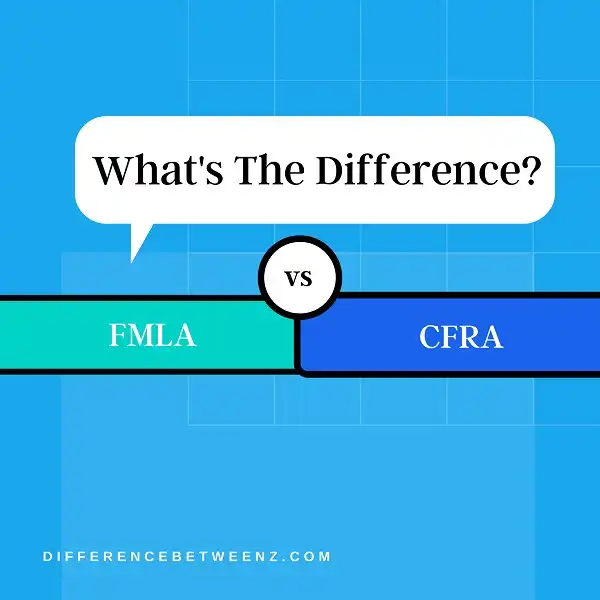Both the Family and Medical Leave Act (FMLA) and the California Family Rights Act (CFRA) allow employees to take time off work for a qualifying family or medical reason, but they have some key differences. The FMLA covers employers with 50 or more employees within a 75-mile radius of the employee’s worksite, while CFRA applies to employers with 20 or more employees within a 75-mile radius. Employees are also eligible for FMLA leave if they have worked for their employer for at least 12 months and have clocked 1,250 hours in that year.
What is FMLA?
- The Family and Medical Leave Act (FMLA) is a federal law that provides employees with up to 12 weeks of unpaid, job-protected leave per year. Eligible employees may take FMLA to leave for certain family and medical reasons, including the birth or adoption of a child, the serious illness of a family member, or the employee’s own serious health condition. The FMLA also provides employees with the right to take leave to care for a covered servicemember with a serious injury or illness.
- Employees are eligible for FMLA leave if they have worked for their employer for at least 12 months, and if they have worked at least 1,250 hours during the 12 months prior to taking leave. To be eligible for FMLA leave, employees must also work at a location where at least 50 employees are employed within 75 miles.
- When an employee returns from FMLA leave, he or she is entitled to be reinstated to his or her previous position, or to an “equivalent” position with equivalent pay, benefits, and other terms and conditions of employment.
What is CFRA?
The California Family Rights Act (CFRA) is a state law that provides eligible employees with up to 12 weeks of unpaid, job-protected leave for certain family and medical reasons. The leave can be taken all at once, or in smaller increments as needed. Whether an employee is eligible for CFRA leave depends on several factors, including the size of the employer and the employee’s length of service. Employees who are covered by both the federal Family and Medical Leave Act (FMLA) and the CFRA may take a combined total of up to 26 weeks of leave for certain qualifying events. However, not all employers are subject to both laws. Employers with fewer than 50 employees are not required to provide FMLA leave, but they may still be covered by the CFRA. An employee’s right to take CFRA leave is governed by several rules and regulations. For example, an employee must have worked for their employer for at least 12 months before being eligible for leave, and they must have worked at least 1,250 hours during that 12-month period. In addition, employees must give their employer at least 30 days’ notice before taking leave.
Difference between FMLA and CFRA
There are a few key differences between the Family and Medical Leave Act (FMLA) and the California Family Rights Act (CFRA). For instance, the FMLA applies to employers with 50 or more employees, while the CFRA applies to employers with 5 or more employees. Additionally, the FMLA provides up to 12 weeks of leave for certain family and medical reasons, while the CFRA provides up to 12 weeks of leave for bonding with a new child or for a serious health condition. Lastly, the FMLA covers both full-time and part-time employees, while the CFRA only covers full-time employees. While there are some key distinctions between these two laws, they both provide important protections for employees who need to take time off from work for personal reasons.
Conclusion
The Family and Medical Leave Act (FMLA) and the California Family Rights Act (CFRA) are both laws that allow employees to take time off work for family or medical reasons. However, there are some key differences between the two laws. For example, FMLA only applies to employers with 50 or more employees, while CFRA applies to employers with 20 or more employees. Additionally, FMLA covers a wider range of family and medical reasons than CFRA does.


